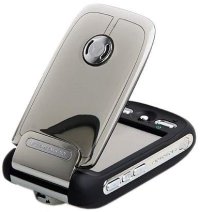Linux perceived as Symbian’s top threat
Mar 20, 2007 — by LinuxDevices Staff — from the LinuxDevices Archive — viewsSymbian's share of the smartphone market will drop from 73 percent in 2006 to 46 percent in 2012, largely due to strong competition from Linux, predicts ABI Research. Lower average selling prices (ASPs) make Linux's impact inevitable, as vendors look to cut software bill-of-material costs, the research firm suggests.
The finding is from an ABI report entitled, “Smartphones and the OS Market.” Therein, Research Director Stuart Carlaw remarks, “It is not a question of 'if' but 'when' Linux will have an impact upon this market. In 2006, Symbian was estimated to have a 73 percent share of the smartphone OS market, yet our forecast is that it will to fall to 46 percent by 2012, due to strong competition coming most notably from Linux, but also from Windows Mobile.”
While the definition of “smartphone” varies among analysts, ABI uses the term in connection with cellphones that have complex operating systems, such as Symbian, Linux, and Windows Mobile.
Overall, 70.9 million smartphones shipped in 2006, ABI said. Some 40 million of those were made by Nokia, which owns a controlling interest in Symbian. Nokia's smartphone sales were up sharply for 2006, from 28.5 million the year before. Additionally, Symbian licensing costs fell in 2006, ABI said.
 Motorola Ming (Click for details) |
Meanwhile, number two mobile phone vendor Motorola claimed 8.5 percent of the smartphone market share in 2006. ABI said that Motorola's smartphone success was driven largely by the Linux-based phones it markets in China — such as the Ming (aka A1200 — pictured at right)
The ABI report found that consumers increasingly look for smartphone-like features, including “touch screens, MP3 players, Wi-Fi and/or Bluetooth, fast processors, and lots of memory as well as an expansion card slot.” Shailendra Pandey, mobile wireless research analyst, stated, “The key in differentiating smartphone products still lies in the physical design, and the look and feel of the user interface. The right combination of size, form factor, operating system, and bundled applications will determine success.”
More details about the ABI report can be found here.
This article was originally published on LinuxDevices.com and has been donated to the open source community by QuinStreet Inc. Please visit LinuxToday.com for up-to-date news and articles about Linux and open source.